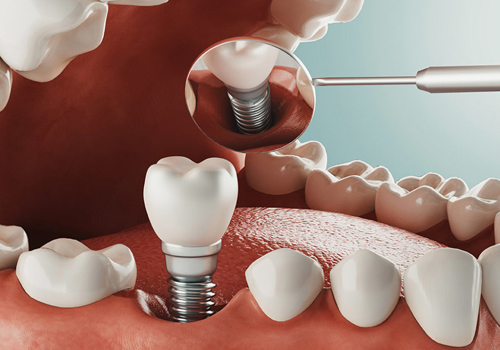
Implantology is the branch of dentistry that deals with the permanent implantation of artificial teeth in the jaw. During the dental implant surgery itself, the oral surgeon makes a cut to open the gum and expose the bone. Holes are drilled into the bone where the dental implant metal post will be placed. Since the post will serve as the tooth root, it’s implanted deep into the bone.
After the post is placed, a waiting period is necessary to allow osseointegration, or for the post to integrate itself into the jawbone to provide a firm foundation for the dental implant. Often, a temporary tooth is provided during the waiting period (which can last up to six months), or the surgeon can suture the gum over the area containing the post to let it heal.
Once osseointegration has taken place, the oral surgeon will place the abutment and the crown. The crown is a fixed prosthesis, meaning it is permanently attached to the jaw and does not need to be removed the way dentures or removable bridges do.
Immediate implant placement is when an implant is placed at the same time as the natural tooth is extracted. The advantages of this procedure include fewer surgical interventions, reduction in overall treatment time, reduced soft and hard tissue loss.
Conventional procedure for implant placement involves extraction of offending tooth, waiting 2–4 months for extraction socket to heal, insertion of implant, and again waiting for 3–6 months for integration of implant with surrounding bone; after this procedure, another surgery is necessary to expose the implant and to place a prosthetic abutment.
A dental implant is more durable than a bridge, which allows them to provide a lifetime of protection. The titanium metal cylinder of the implant is durable and incredibly resistant to gum problems and decay.